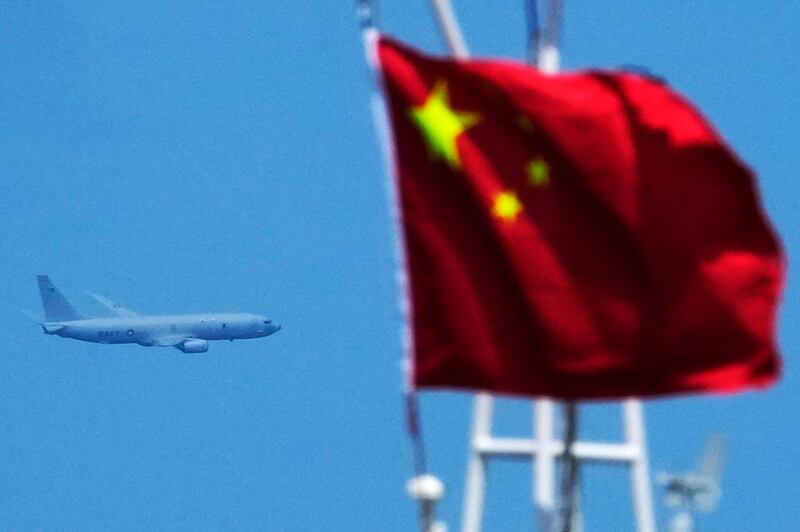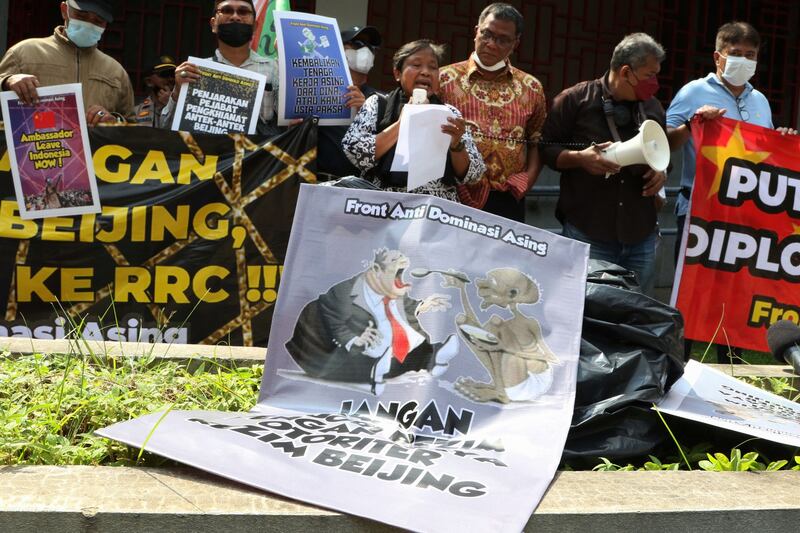Southeast Asian countries and Taiwan on Thursday objected to China’s latest version of its territorial map because of new boundaries that reach waters they claim as well in the South China Sea.
Beijing released the map on Monday amid tensions with the United States over Taiwan, and days after China Coast Guard ships formed a cordon to block Philippine supply boats delivering supplies to the BRP Sierra Madre, Manila's military outpost in Ayungin Shoal (Second Thomas Shoal), in the disputed waters.
“This latest attempt to legitimize China’s purported sovereignty and jurisdiction over Philippine features and maritime zones has no basis under international law, particularly the 1982 United Nations Convention on the Law of the Sea (UNCLOS),” the Department of Foreign Affairs in Manila said in a statement.
A 2016 international arbitration ruling had invalidated China's sweeping claims to the South China Sea, the department noted.
“The Philippines, therefore, calls on China to act responsibly and abide by its obligations under UNCLOS and the final and binding 2016 Arbitral Award,” it said.
The 2023 edition of China’s territorial map covers Taiwan and most of the West Philippine Sea, particularly the contested Spratly Islands. The West Philippine Sea is how Filipinos refer to South China Sea waters within their nation’s exclusive economic zone (EEZ).
Fellow ASEAN members Malaysia, Indonesia and Vietnam, along with Taiwan, also spoke out against the new map.
“Taiwan, the Republic of China, is a sovereign and independent country that is not subordinate to the People’s Republic of China,” said Jeff Liu, spokesman for the foreign ministry of Taiwan, which China considers a renegade province.
“The People’s Republic of China has never ruled Taiwan. These are universally recognized facts and the status quo in the international community,” he said.
China claims nearly the entire South China Sea, including waters within the EEZs of Brunei, Malaysia, the Philippines, Vietnam and Taiwan.
In Jakarta on Thursday, Indonesian Foreign Minister Retno Marsudi told reporters that the government had always maintained that any claim must be consistent with UNCLOS.
While Jakarta is not an active claimant in the South China Sea, it has been locked with China in tensions over the Natuna Islands.

In Malaysia, Foreign Minister Zambry Abdul Kadir said the government would lodge a formal protest with China over the new map.
“This map has no binding effect on Malaysia whatsoever,” Kadir had said a day earlier when his office responded angrily to it.
And in Vietnam, the government on Thursday called the map “a violation of Vietnam’s sovereignty and international laws, especially the U.N. Convention on the Law of the Sea.”
Spokeswoman Pham Thu Hang said China’s sovereignty and maritime claims, based on a new 10-dash line as depicted on the map, were null and void, according to Vietnamese media.
Extra dash
China came out with its revised map soon after the Philippines announced upcoming joint patrols with Australia and the U.S. in South China Sea waters. Japan has said it was negotiating for a similar defense arrangement with the Philippines as it seeks to contain China’s military growth in the region.
In Manila, Senate President Juan Miguel Zubiri promised to expedite passage of the proposed Philippine Maritime Zones Act to quell attempts by China to include waters claimed by the Philippines as its own.
Zubiri said officials were confident that China’s 2023 map would solidify support for the Permanent Court of Arbitration ruling, which quashed the nine-dash line that had appeared on older Chinese maps.
“More countries will support and stand with the Philippines to condemn and to appeal to China not to follow that ridiculous 10-dash line. It violates the sovereignty, not only of the Philippines now, but of several other countries all around Asia,” Zubiri said.
The added 10th dash takes in the island of Taiwan, and the map also encompasses small islands claimed by Vietnam, the Philippines, Brunei, Malaysia and Indonesia, according to Paris-based Modern Diplomacy.
In addition, the new map also includes the Indian state of Arunachal Pradesh.
“We will not be alone this time. I think India has filed a formal protest, Indonesia and Malaysia have also filed protests along with Vietnam. And I think that will speed up the process of a code of conduct in the South China Sea,” Zubiri said.
India filed its own protest on Tuesday, a day after the map’s release, according to media reports.
Risa Hontiveros, another Philippine senator, called China “delusional” for issuing the new map.
“We know that China is a master manipulator, willing to bend the truth for her own gain, at the expense of countries like ours,” Hontiveros said. “China will continue to spread fake news, fund pro-Beijing mouthpieces and distribute propaganda materials. We must push back. We must not rest until China stops her absurdity.”

Collins Chong Yew Keat, a security analyst at University Malaya in Malaysia, said the map’s timing invited scrutiny in light of rising regional tensions that would compel Beijing to defend its interests and maximize its gains.
He said the path chosen by Beijing is based on a three-pronged factor. First, he said, is a fast-closing window and timeframe for Chinese President Xi Jinping to execute his planned reunification with Taiwan.
“Second, the increasing counterforce capacities by the U.S. in thwarting Beijing’s moves have challenged Beijing’s near-term capacities. And third, the declining effectiveness of deterrence and influence of ASEAN itself in showing real and credible opposition to Beijing’s inroads, will give a clearer path for Beijing to reassert its push,” Chong said.
Responding to the criticism, Chinese foreign ministry spokesman Wang Wenbin said "China's position on the South China Sea is consistent and clear.
“The competent authorities of China routinely publish standard maps of various types every year,” he told reporters on Thursday. “We hope parties concerned can view it in an objective and rational light.”
BenarNews is an RFA-affiliated news outlet.
